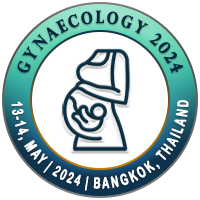
Nazlima Nargis
Ibn Sina Medical College & Hospital, BangladeshTitle: Prophylactic use of Tranexamic Acid during Caesarean Section in Preventing Postpartum haemorrhage– a Prospective Randomised Double Blind Placebo Controlled Study
Abstract
Background: Postpartum haemorrhage (PPH) is a major cause of maternal mortality, accounting for one-quarter of all maternal deaths worldwide. Tranexamic acid (TXA), an antifibrinolytic agent, has therefore been investigated as a potentially useful complement to prevention and treatment of PPH. It has been proved to reduce blood loss in elective surgery, bleeding in trauma patients, and menstrual blood loss.
Aim: To evaluate the effectiveness of TXA in reducing blood loss given just immediately after delivery of baby in women undergoing cesarean section.
Methods: This was a prospective, randomized, double blind, placebo controlled study conducted in the Department of Gynaecology and Obstetrics unit of IBN SINA Medical College Dhaka, Bangladesh from June 2016 to May 2017. Participants were randomly assigned to TXA group or group A (n=60) and placebo group or group B (n=60). Randomization was done by residents using computer generated random numbers. Group A received 1 gram(10ml) of intravenous bolus dose of TXA just after delivery of the baby, Group B received 10ml of sterile distilled water for injection intravenously at the same time. Statistical analysis has been done by SPSS.
Results: The subjective characteristics in the two groups were similar with respect to their age, BMI, gestational age and gravidity. The duration of surgery was 40-50 minutes. There was no statistically significant difference in the heart rates (p>0.05) and blood pressures between the two groups, after 2 hours of delivery. Blood losses from both placental deliveries to the end of cesarean section and from end of CS to 2 hours postpartum were significantly lower in the study group (p<0.05). Change in hemoglobin concentration in study group was also significantly less than in the control group. Total amount of oxytocin required was significantly less in TXA group (p<0.05) also the number of women requiring other oxytocics(inj. Methyl ergometrine, inj carboprost and tab misoprostol per rectally) was significantly less in TXA group (p< 0.05). The amount of intra-operative fluid required were significantly less in TXA group (p<0.005); however post – operative fluid requirement and minor side effects in the form of nausea and vomiting were similar in both the groups.
Conclusion: Tranexamic acid can effectively reduce blood loss in patients undergoing LSCS and its use was not associated with any side effects and or complications like thrombosis. The adoption of WHO guidelines for using uterotonic agents and prophylactically administering TXA may significantly reduce the number of PPH incidents.
Biography
WILL BE UPDATED SOON

